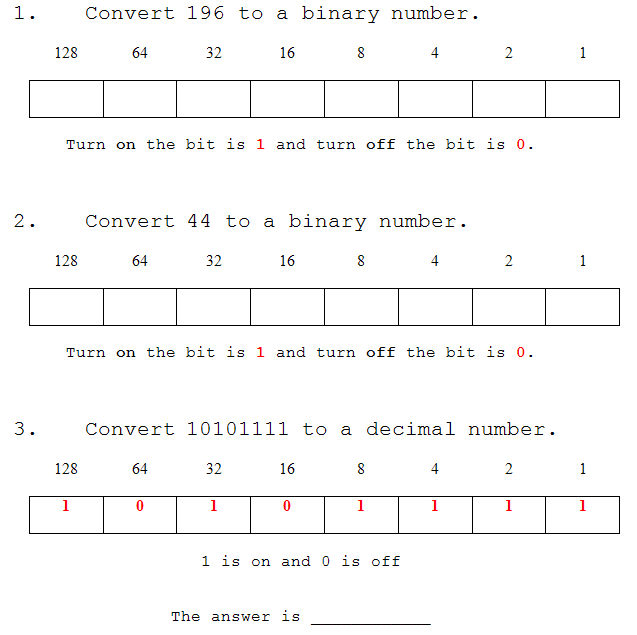Bits, Bytes, and Words
- Each 0 or 1 in the binary system is called a
bit (for binary digit).
- The bit is the basic unit for storing data in computer memory (0 means
off, 1 means on).
Since a bit is always either on or off, the computer is
always storing some kind of data.
- Single bits cannot store all the numbers, letters, and special
characters (such as $ and ?) that must be processed by a computer.
The bits
are put together in a group called a byte
(pronounced "bite").
- A byte usually holds 8 bits and represents one entity, like a character
of data such as a letter, digit, or special character.
- Bytes are usually expressed by the thousands, millions, and billions:
kilobytes (KB or K),
megabytes (MB), and
gigabytes (GB), respectively.
A kilobyte (KB) is 1,024 bytes (210).
A
megabyte (MB) is 1,024,000 bytes (220) or 1,024 KB.
A gigabyte (GB) can be
1,024,000,000 bytes (230), 1,024,000 KB, or 1,024 MB.
A terabyte (TB) : 1 TB =
240bytes
= 1024 GB.
- Personal computer memory may have 64 MB and more.
- Megahertz is a
measurement of the speed of the microprocessor.
- A computer word is defined as the number of bits
that constitute a
common unit of data, as defined by the computer system.
The size is from 8
bits to 32 or 64 bits. The larger the word, the more powerful the computer.
- The parts of a computer are connected by collections of wires called buses or bus lines.
Each has a certain number of data paths
along which bits can travel; the number of data paths is usually related to
the number of bits in the word size.
| |
|
|

|
 |


